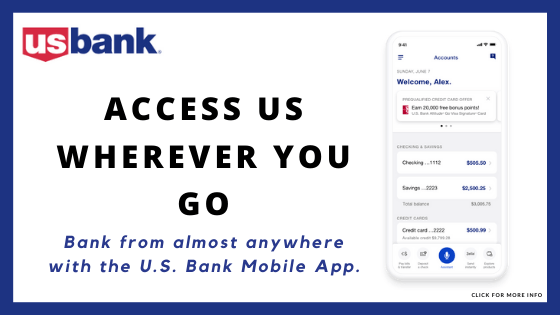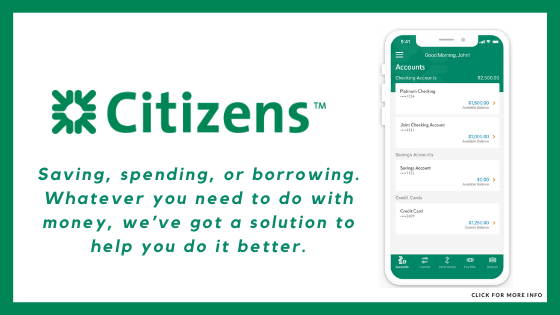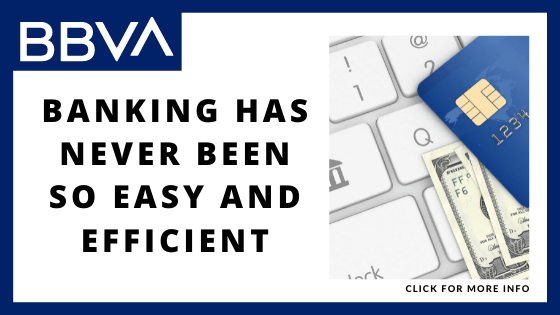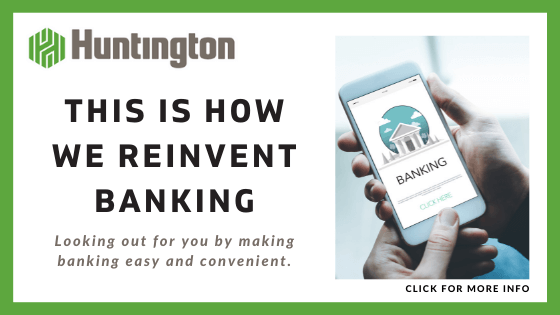The 10 Best Banks to Bank With
There are many banks that people can choose from, depending on one’s location and individual financial circumstances. Banks today offer a wider range of services and do not rely as much on the opening of physical branches. This is because customers can do most of their banking online, either through the website or by downloading the app.
Deciding on the best banks to bank with depends to a large extent on your individual needs and circumstances. Nevertheless, you should consider the bank’s number of existing customers, introductory offers for new members, and the number of branches.
From the number of existing customers to the number of available branches, you may have many questions you need the answers to before you decide on an individual bank. Read on to learn everything you need to know about the best banks to bank with.
What Does “Bank With” Mean?
Generally speaking, when people say who do you “bank with,” that refers to the specific financial institution that you use to deposit your money and access your capital funds. Most people decide on a bank pretty early in their life, as soon as they are able to get a job that requires a checking account.
It is fairly common for customers to have more than one bank account. The benefit of having more than one bank account is that you can use one as a savings account and use the other one as a checking account. In addition, by having two or more accounts, there is the increased convenience if you need to withdraw money from ATMs.
What Is the Best Bank to Bank With?
The answer to this question will depend to a large extent on your location, needs, and individual financial circumstances. There are three factors that you need to consider before you decide on a particular bank:
- Are they a national or a regional/local bank?
- Are there any introductory offers for new customers?
- The number of branches and ATMs
Combined, these three factors will to a large extent determine your choice of a bank. The first two are especially important if you are opening your first account and if you plan to do most of your banking locally or regionally and do not need national reach.
National vs. Regional or Local Banks
There are important differences between national and regional or metropolitan banks. First, large national banks such as Chase, Citibank, or Bank of America have a national reach and provide the convenience of physical locations across the country. If you are traveling across the country, regional banks will likely not have a presence everywhere.
Second, national banks have a significantly larger lending capacity and a wider range of available financial services. If you own a business and have access to international markets, large and established national banks can move money faster between countries and different currencies. In addition, they have more employees to help customers.
Third, notwithstanding the convenience of more locations, larger lending capacity, and access to international markets, national banks are also more rigid in their requirements and processes. If you have an account with a smaller local bank, you are more likely to know the employees better and develop a more direct, personal relationship with them.
Finally, local banks are more likely to be directly engaged with the community and fund local services. Large national banks do not have as close a relationship with the local community as they tend to be more interested in funding areas of national interest. Local banks often contribute money to charitable organizations that operate at the local level.
Introductory Offers for New Customers
If you are planning to open a new account, some banks may offer you generous incentives to choose them. These incentives can range from sign-up bonuses to open a new checking account, low or no maintenance fees, and generous savings account offers.
For example, some banks will offer you up to several hundred dollars if you open a new checking account and maintain it for a certain period of time. This is great for students and young professionals who are just starting their careers and need to open their first or second checking accounts.
For customers interested in opening a savings account, some banks also give generous incentives. For example, Citibank will give you anywhere between $20 and $2,000 if you open a new savings account and maintain a certain balance for a period of 60 days. TD Bank, HSBC Bank, and numerous others offer similar incentives.
Regardless of the specific offer, you want to make sure that your money is safe with your bank of choice. You should only sign up with banks whose deposits are backed by the Federal Deposit Insurance Corporation. This is a federal agency that insures deposits of up to $250,000 in case the bank fails or goes bankrupt.
The Number of Branches and ATMs
While most banking transactions are done online, there are cases where you may need access to cash or cases where there are some problems with your account. If this happens, you will need access to a physical location, such as a bank branch or an ATM to withdraw money.
If your job requires you to travel extensively, large national banks will have more physical locations and ATMs to choose from. This is a major convenience that smaller and more regional banks do not offer. Of course, you can always use another ATM, but these will usually have fees that can add up over time.
Physical locations are also useful if you encounter any problems and need to address them immediately. Most banks today have invested extensively in online banking. However, if there are some problems with your account or you need clarifications, it is often useful to speak to someone in person.
What Makes Banking with a Bank Great?
There are several things that can make your overall banking experience more pleasant. You should consider things such as fees for monthly account maintenance, overdraft fees, ATM accessibility, and transferring money between accounts. Banks that offer lower fees and have more locations make banking easier with them.
- Most banks, especially large national ones, will require monthly maintenance fees unless you deposit or keep a certain amount of money in your checking or savings account
- Depending on how much money you plan to deposit or keep in the account, you should research these fees and find the lowest ones possible
If you plan to use your bank for more than just checking and savings accounts, you should research the different types of services they may offer. For example, if you choose to only do business with one bank, you should opt for the one that offers additional services, such as opening a retirement account.
The 10 Best Banks to Bank With
After discussing the different options that banks may offer depending on your financial needs, it is time to discuss the 10 best banks to bank with. Some of these banks have a national presence and locations across the country, while others are primarily concentrated in specific regional areas.
Before you decide on a specific bank to do business with, consider if you need a national bank that has a presence across the country or a smaller bank that is mostly present in your area.
1. Chase Bank
Chase bank is a commercial and consumer banking subsidiary of JP Morgan Chase and of the largest banks in the United States by assets. As with other large national banks, Chase offers the convenience of having physical locations and ATMs across the country.
Chase usually rewards new customers with bonuses for opening new accounts. In addition, it is fairly easy to avoid the monthly maintenance fee because Chase only requires a $500 direct deposit during a monthly statement period.
For customers who wish to have all of their financial needs and services handled by one institution, Chase offers a broad range of financial products. In addition to mortgages and car loans, Chase also offers some of the broadest selection of credit cards and has an online banking experience consistently rated among the top.
2. Bank of America
Similar to Chase, Bank of America has physical locations across the country and a large network of ATMs. However, unlike Chase, its online banking experience and the credit card selection are not as good.
Bank of America offers three different checking account options.
- In all three cases, you can get $100 for opening a new account
- These three accounts differ on the minimum deposit and balance amount to avoid the monthly maintenance fee, as well as the charges for overdraft fees
The typical Bank of America savings account offers only 0.01 to 0.05% annual percentage yield (APY). This is lower compared to savings accounts available elsewhere.
3. Citibank
Citibank also has a massive network of ATMs across the country, but a fewer number of branches compared to other big national banks. There are various checking accounts available and you can generally avoid the monthly service fee if you set up one direct deposit and one bill payment in a statement period.
The various savings accounts that Citibank offers also have relatively low APY, usually of less than 0.05%. The online and mobile banking experience is also good and almost all of the banking requirements, including check deposits, can be done online.
Citibank is the world’s largest credit card issuer and has many credit card options available, depending on your income and credit history. Credit card purchases can earn you travel rewards, cash bank, and Citi’s proprietary ThankYou points that you can use to make purchases on Amazon, among other sellers.
4. Wells Fargo
Wells Fargo is the fourth-largest bank in the country and has more branches and ATMs across the country than most other banks. In addition to the convenience of easily accessible physical locations, Wells Fargo also makes it relatively easy to avoid monthly fees.
- In 2017, Wells Fargo partnered with Intuit to provide a secure connection for customers who use Mint and TurboTax online
- This allows customers to more easily share their data with these financial institutions, including when they do their tax returns
Like other national banks, Wells Fargo offers low-interest rates on savings accounts that range from 0.01% to 0.03%. Because these savings accounts also carry a monthly fee, you may even lose money if your account balance goes below a certain level.
In 2016, Wells Fargo was engulfed in a scandal in which its employees were accused of engaging in unlawful practices that resulted in improper charges for customers and unauthorized opening of accounts. The bank was forced to pay billions of dollars in fines, in addition to considerable damage to its reputation.
5. Capital One Financial Corporation
Capital One is one of the country’s largest credit card issuers and has branches located across the country. The main checking account, called 360 Checking, does not require a minimum balance and has no maintenance fees, which makes it more attractive compared to other banks.
The main savings account, called 360 Savings, also has no maintenance fees and does not require a minimum balance. Capital One also has about 30 Capital One Cafes around the country where customers can open new accounts and discuss financial services while enjoying coffee.
6. U.S. Bank
U.S. Bank, headquartered in Minnesota, is available in 26 states, primarily located in the Western half of the country. They offer a wide selection of financial products, ranging from credit cards and mortgages to auto loans and savings accounts.
The interest rates on its various savings accounts are not competitive with the national banks and there are required minimum balances to avoid the monthly fee. If you are opening your first savings account, their Standard Savings option has only $4 monthly maintenance fee and requires only $300 of minimum daily balance.
However, regardless of how much money you have in the savings account, the APY is only 0.01%, significantly lower compared to other banks’ savings accounts.
7. PNC Bank
PNC Bank has locations in 20 states and the District of Columbia. Customers who open new accounts can earn up to $300 sign-up bonus with a checking or a savings account. In addition, PNC also has strong online and mobile banking tools and excellent customer service.
Virtual Wallet Spend is one of PNC’s basic checking accounts and will reimburse some fees if you use a non-PNC Bank ATM. The $7 monthly fee can be avoided if you make a monthly direct deposit of at least $500 and a combined balance of at least $500.
8. Citizens Bank
Citizens Bank is headquartered in Providence, Rhode Island, and operates in 11 states, mostly in the Northeast United States. The basic checking account, called One Deposit Checking, requires a deposit of any amount to waive the $9.99 monthly fee. The basic student checking account has no monthly fee.
Citizens Bank is a good choice for people who are looking for in-person banking experience and rarely travel across the country or do business elsewhere. The interest rates on savings accounts is lower than the national average of 0.06%. Citizens Bank also offers other financial services, such as home loans, student loans, etc.
9. BBVA Compass
BBVA Compass is headquartered in Birmingham, Alabama, and has branches and ATMs across the country. It is a good option for customers who want to open a new checking account and want to avoid the monthly service charge. In addition, there are international ATMs locations, available in Mexico, Canada, and Australia.
While BBVA Compass has low rates on online savings, you only need to deposit $25 to open a new savings account and you can avoid the monthly service fee if you opt for e-statements. Compared to other banks, BBVA Compass charges a high overdraft fee of $38 that can be charged up to 6 times per day.
10. Huntington Bank
Huntington Bank has a strong presence in the Midwest and has almost 2,000 ATMs, a strong number for a regional bank. Huntington offers a wide range of certificates of deposit, although the interest rates are relatively low.
- The Savings account has a $4 monthly fee, but it is relatively easy to avoid, as long as you maintain at least $300 in total balance
- Similar to other large banks, the interest rates on savings accounts are relatively low, usually less than 0.05%
Huntington offers a free overdraft protection feature that allows you to avoid the overdraft fee, as long as you bring your balance to at least negative $5 by midnight of the next business day. If you are unable to do this, there is a $37.50 overdraft fee that can be charged up to four times per day.
There are many banks customers can choose from, depending on what their primary interests are. If you only intend to open a checking account, there are relatively easy ways to avoid the monthly maintenance fee. You just need to make sure to establish a direct deposit and, in some cases, maintain a monthly minimum balance.
Most banks, be it national or regional, offer extremely low APY, usually of less than 0.05%. As a result, customers interested in opening savings accounts should probably focus on credit unions and other financial institutions, as they usually offer better terms. If you plan to travel extensively across the country, you should consider a national bank.














